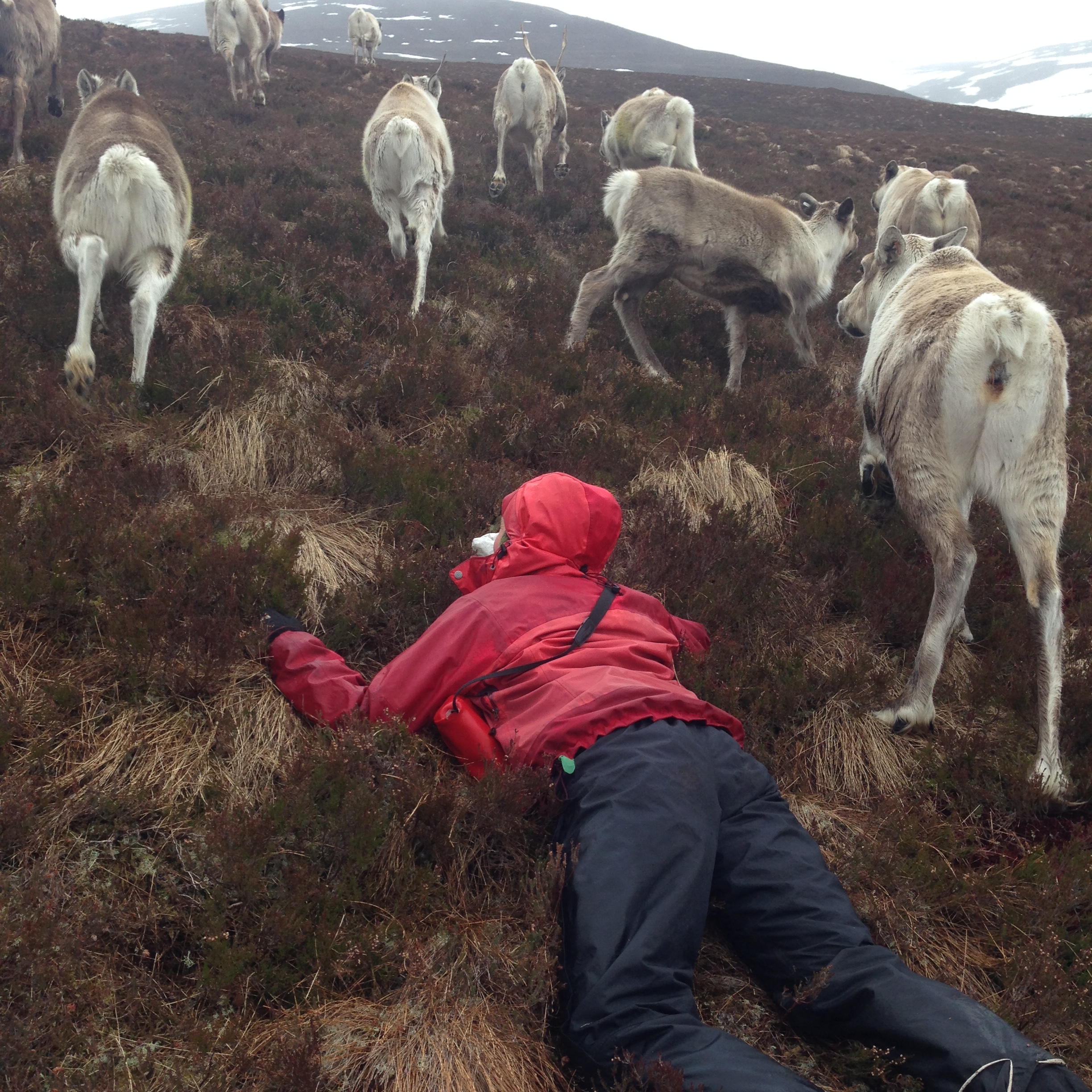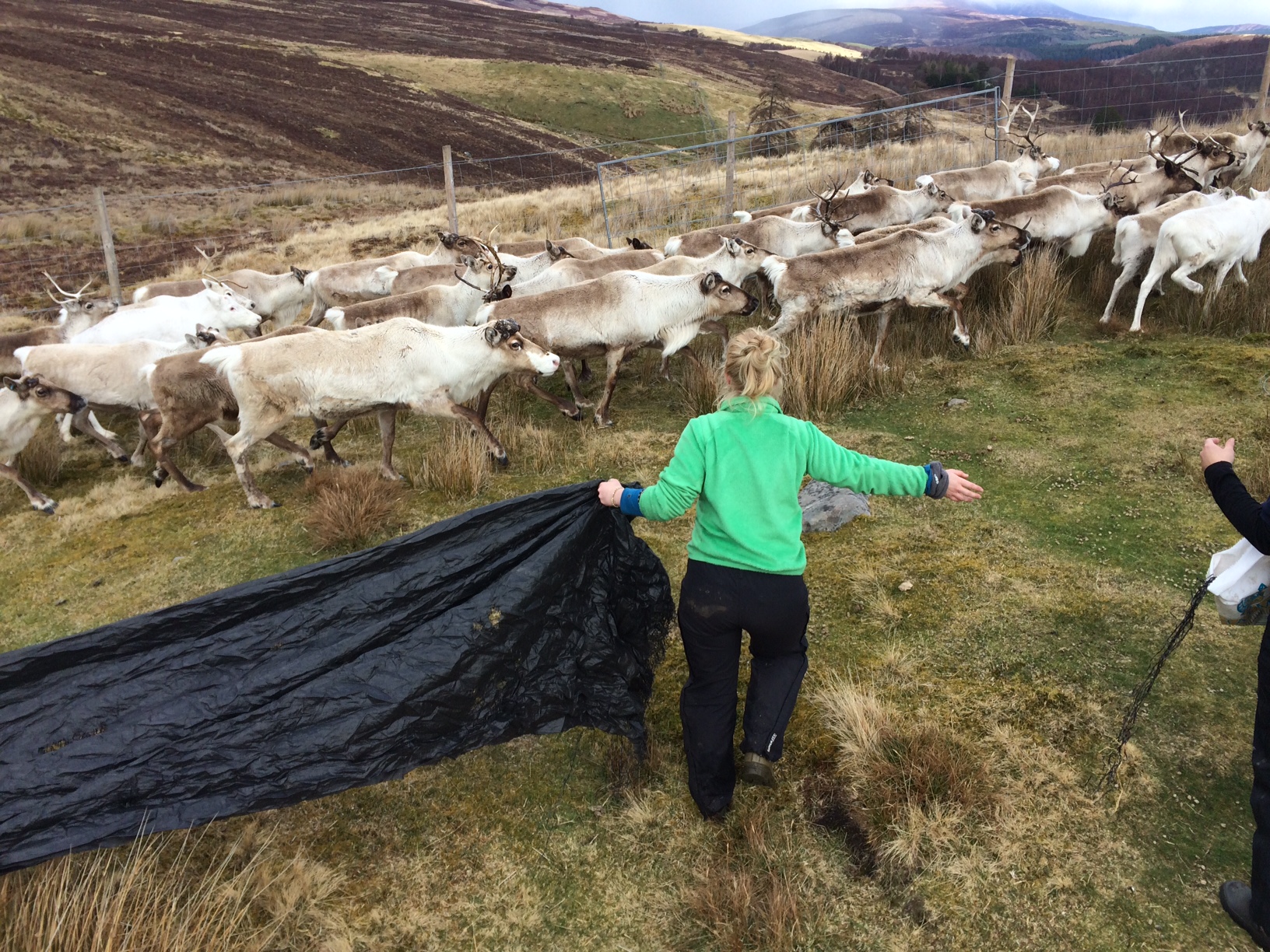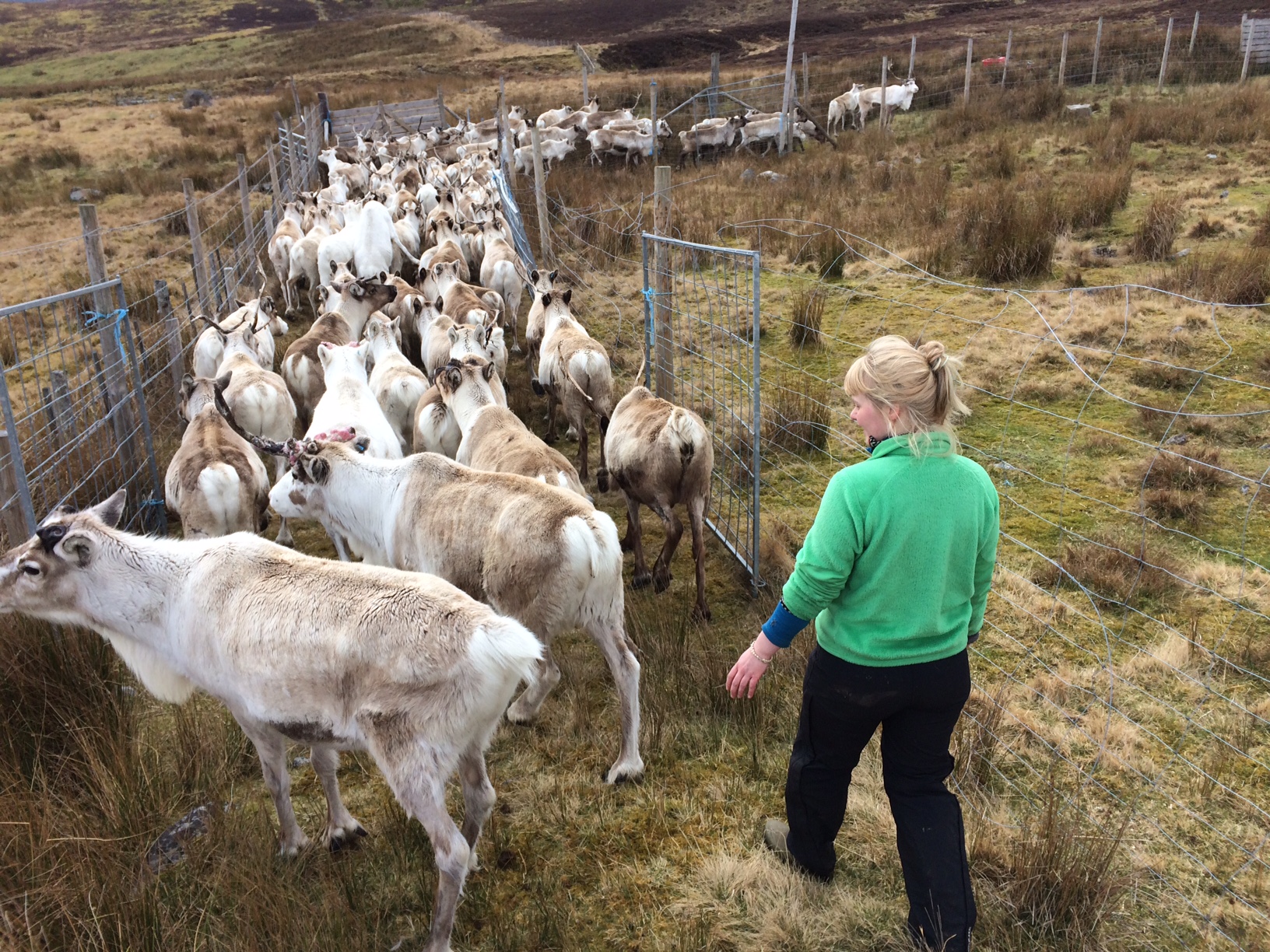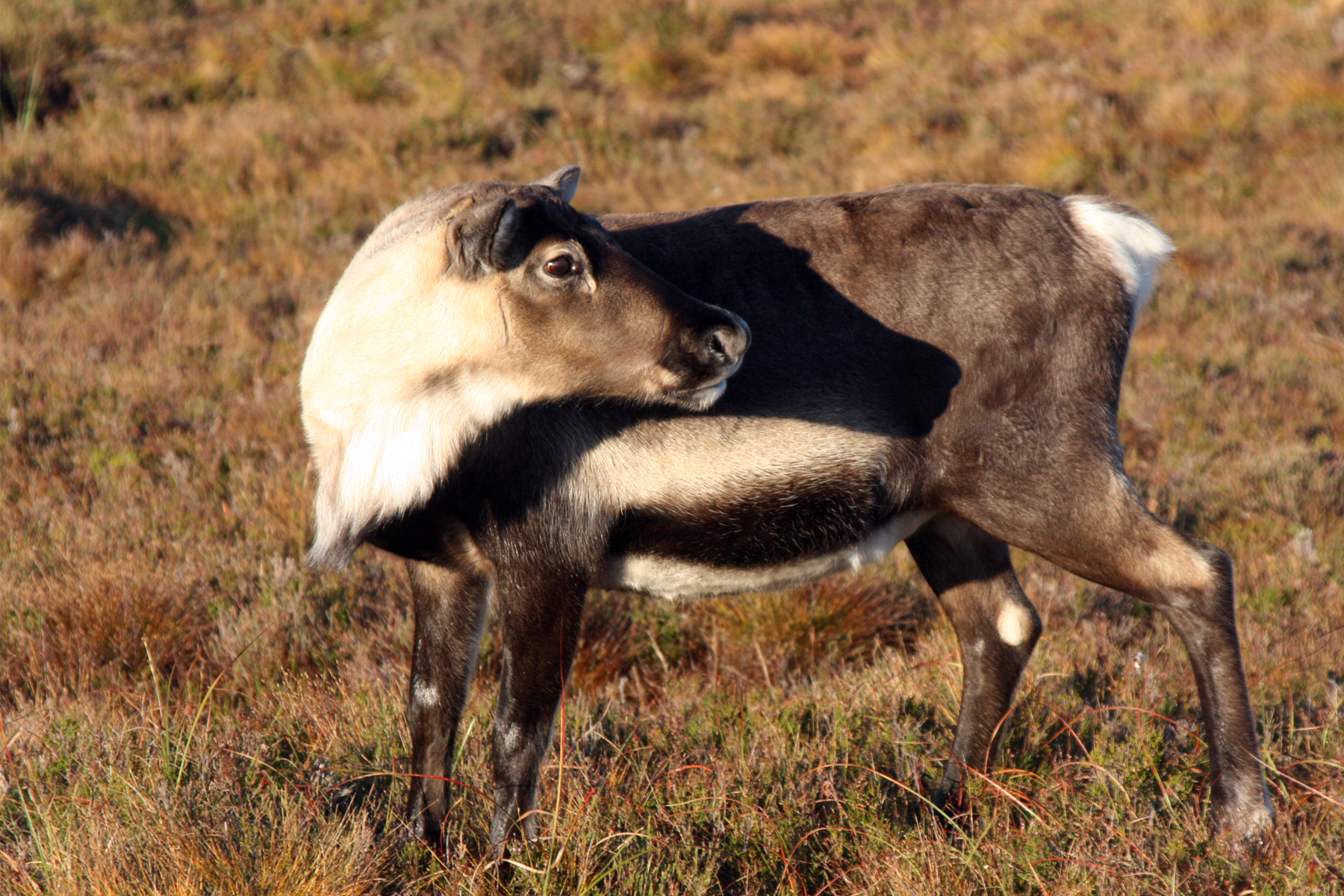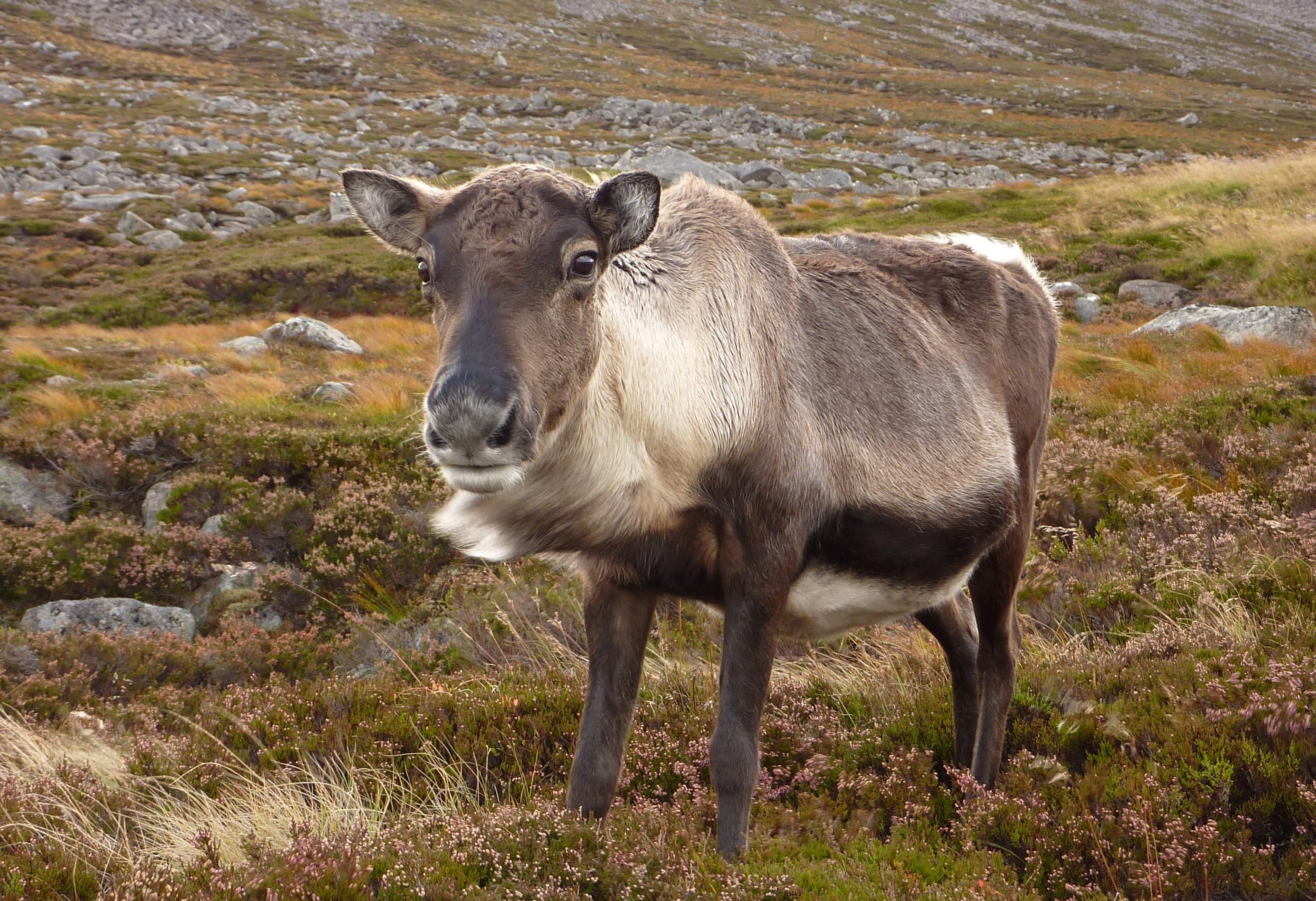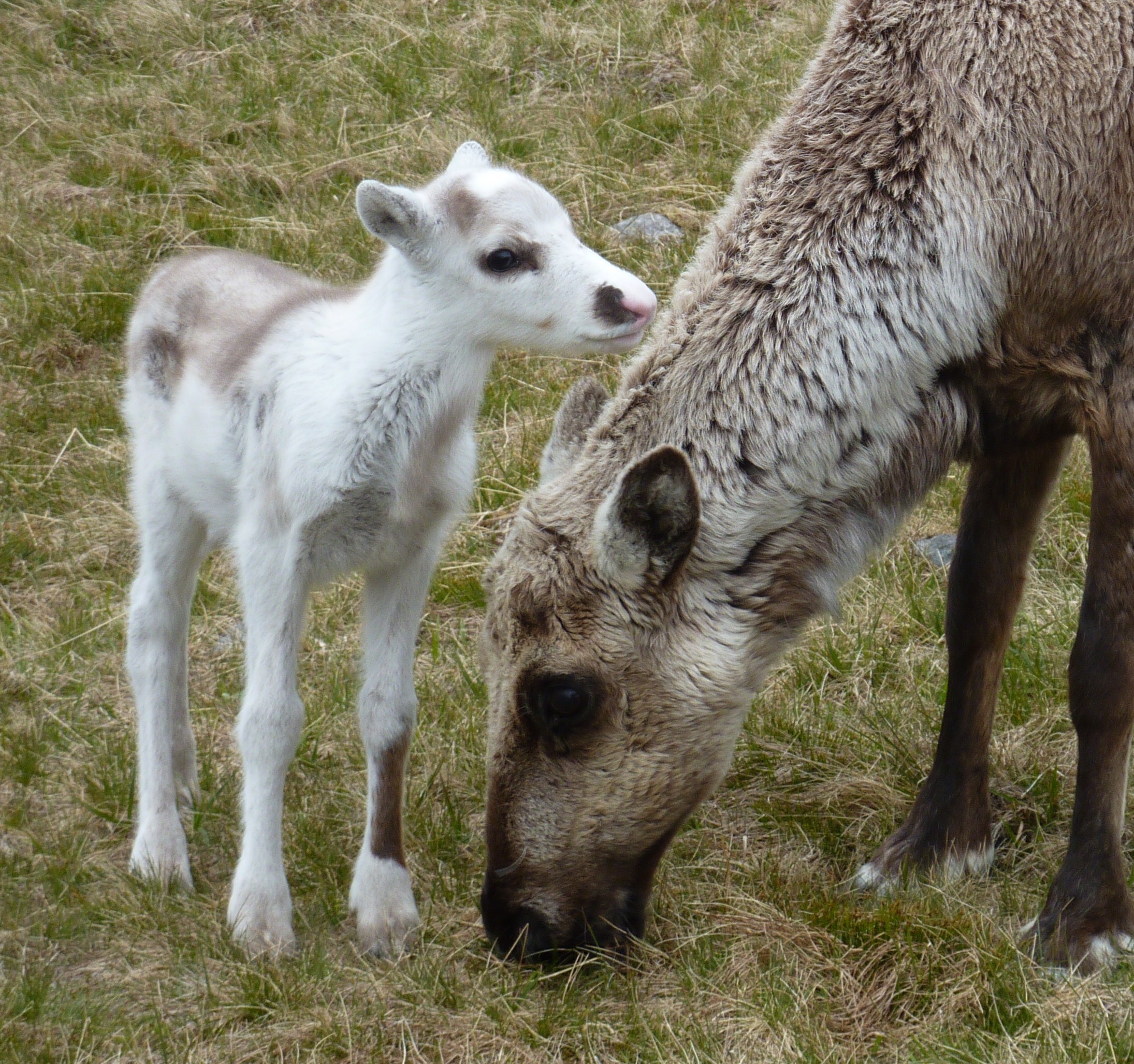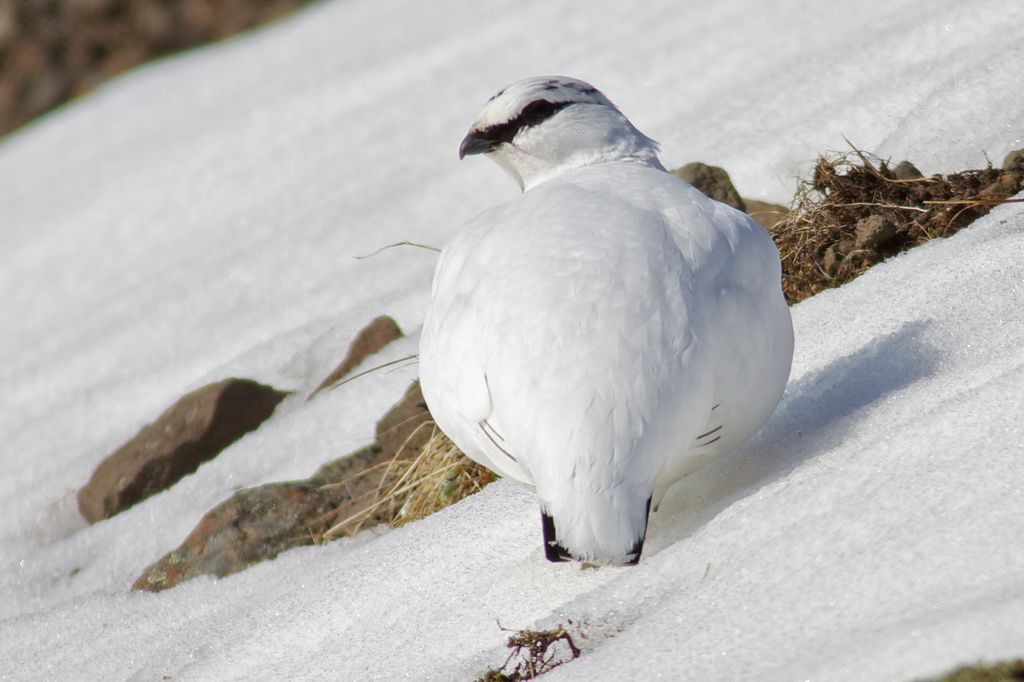It is the morning of April 29th, and it is the calm before the storm – the reindeer calving season. All was quiet this morning on the hill, but a sea of large pregnant bellies greeted Sarah and I in the enclosure, ready and waiting…
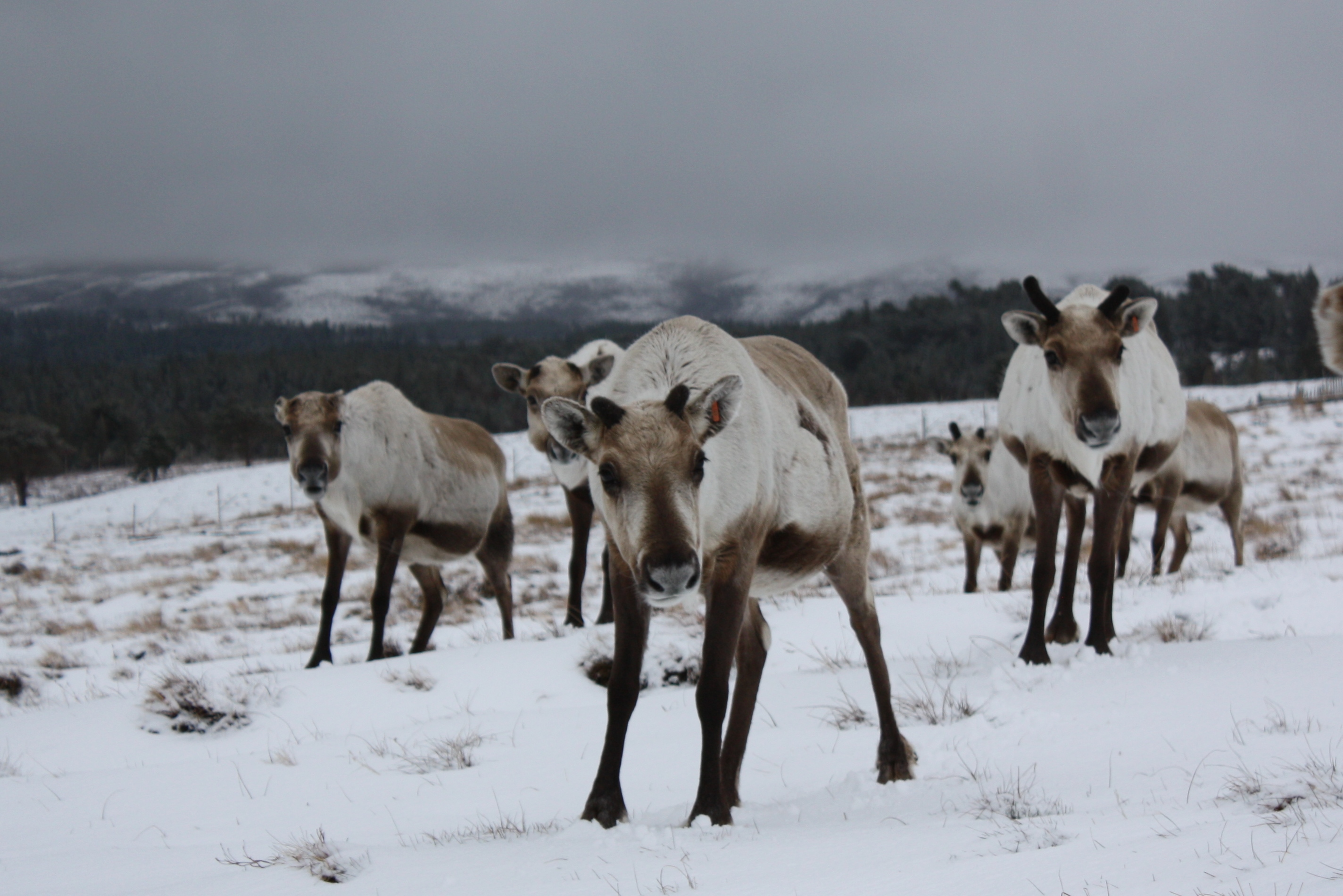
Having spent the first few months of the year free-ranging out on the mountains, last week we brought the cows into the enclosure to sort them out ready for calving. Non-pregnant females went back out to free-range for the rest of the spring and summer, while the pregnant ones were moved into the main part of the enclosure (after a frantic fixing of the fences after the winter storms!). They will now stay in for the next 3 – 4 weeks but once the majority have calved, they will go out on to the free-range to join the single females out there for the summer. While it’s lovely for us to have the cute wee calves around for a while, ultimately they will do better out on the higher areas of the mountains, up away from the biting insects, and so for this reason we get them out onto the free-range as soon as possible after calving.

The East Enclosure (the main area inside the enclosure where we take the hill trips to) becomes the pre-natal unit, with one by one as they calve, the reindeer being moved through to the Bottom Corridor (the smaller area immediately inside the main visitor gate) – the ‘nursery’. The cows generally just get on with calving themselves, and older females, knowing the score, have been known to bring their new calves to the gate into the Bottom Corridor (BC) themselves, ready to move into the nursery! Younger or more inexperienced cows often give us a bit of a run around, marching away with their little one trotting at their heels – telling us in no uncertain terms to keep our distance. We spread out and act like sheepdogs, herding the cow gently in the right direction and through the gate into the BC.
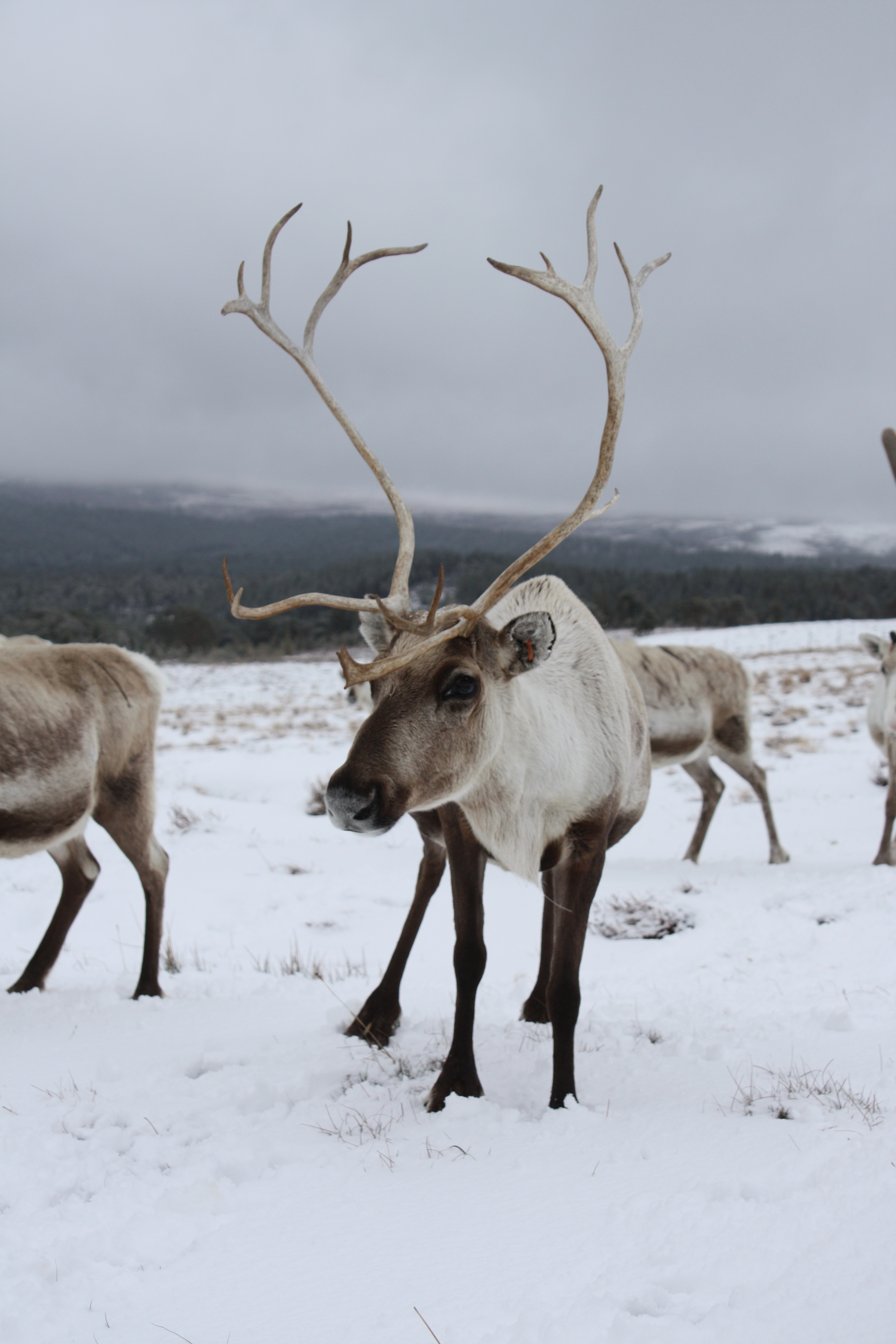
The reindeer in the enclosure I feel a bit sorry for just now are the female yearlings, still with their mums and totally unaware they are about to plummet from apple of their mum’s eyes to second best, as their mum’s attention is turned to their new siblings. The yearlings are always very confused by this, and often stand despondently nearby, watching the new calf suckling. By the summer though they have come to terms with this new development, and have re-joined their mums to make little family parties.
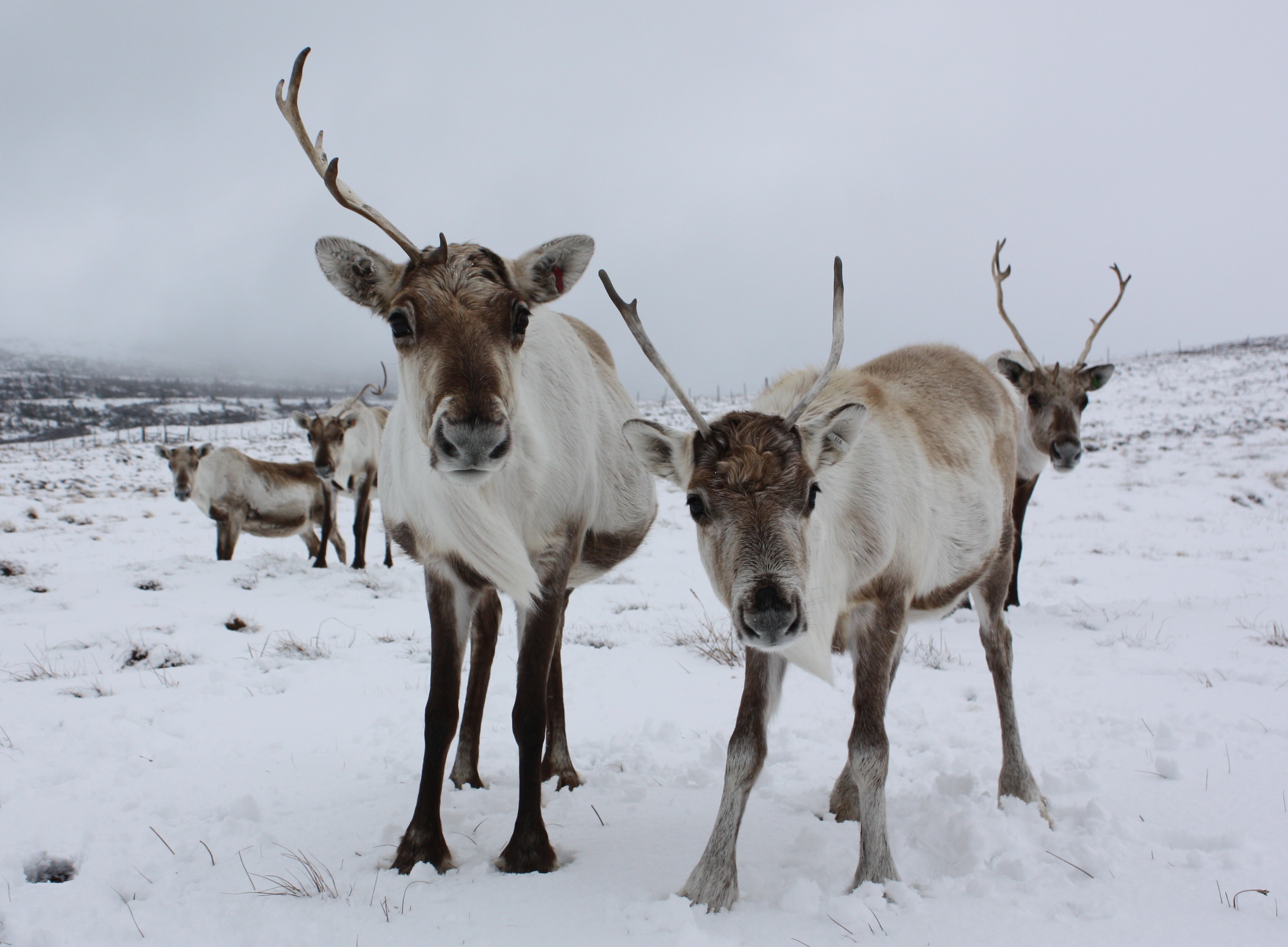
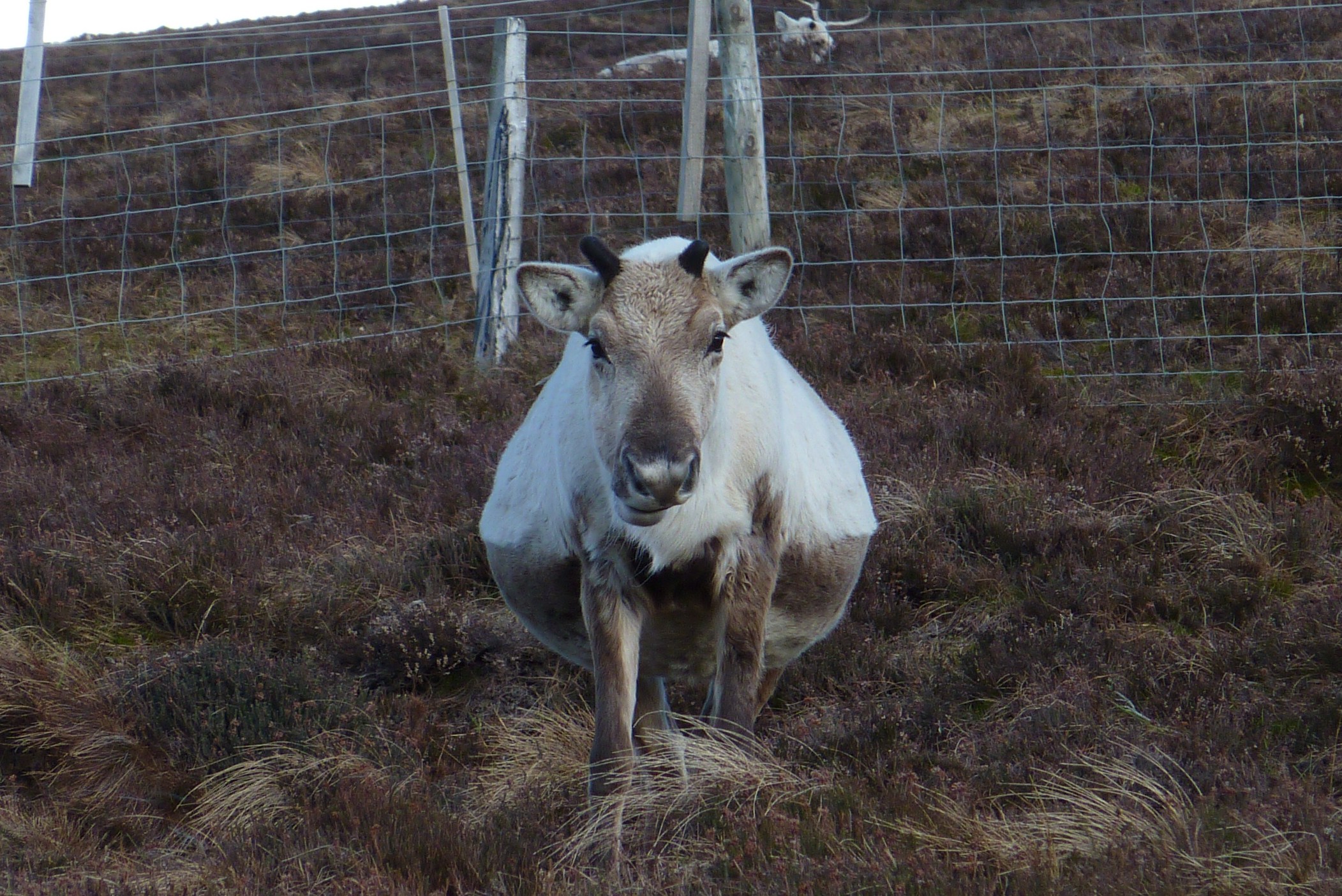
So there we have it. The reindeer are in the correct place, the staff bets are in for first cow to calve, the calving rucksack is ready for early morning expeditions around the enclosure (complete with emergency chocolate bars) and the stage is set. Unfortunately winter has sneezed on us all again, but hopefully it’s its last spluttering cough of the season – we, and the reindeer, are ready for spring!
Hen




